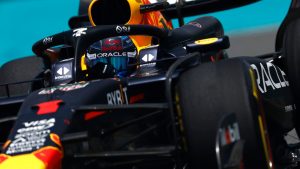Why the best racehorses go for tens of millions
Written by Matthew Ponsford, CNNHow much is the world’s most expensive horse worth? It’s a question with no easy answer, but there are decades’ worth of jaw-dropping sums involved.While soccer’s top leagues attract disbelief for the astronomical prices paid for star players, these fees only slightly surpass those spent on the world’s best racehorses. At the turn of the millennium, when Real Madrid shelled out more than $64 million for Zinedine Zidane to make him the world’s most expensive soccer player, Kentucky Derby-winning thoroughbred Fusaichi Pegasus traded hands for a reported $60 million to $70 million.Not until 2009, when Christiano Ronaldo made an astronomical $130 million move from Manchester United to Real Madrid, did a soccer transfer definitively eclipse the record fee for a horse. The Portuguese winger became the first soccer player to exceed — in inflation-adjusted terms — the $40 million (more than $100 million in today’s money) paid for Shareef Dancer back in 1983. It is not, perhaps, a completely fair comparison. After all, what matters is what you get for your money.How the numbers stack upOutside the world of thoroughbred racing, horses of different stripes attract different prices. The most paid for a working horse was $112,500 in 2003, when a 2-year-old Belgian stallion named McIlrath’s Captain Jim sold at auction in Gifford, Illinois, according to Guinness World Records.But the buyers wanted to breed him, not work him. And so it is with racehorses. Fusaichi Pegasus may have racked up $2 million in winnings before his fifth birthday, but by then his racing career was over. The $60-million-plus fee was paid in expectation that he would produce race-winning offspring and become a money-spinner in the horse breeding industry.Fusaichi Pegasus is believed to have sold for $60 million and $70 million. Credit: JEFF HAYNES/AFP/AFP/Getty ImagesWith the emergence of new big-money races, like next year’s $20 million Saudi Cup, horses have growing potential to earn back huge fees during their race careers according to Jimmy George, marketing director at Tattersalls, a major auctioneer of race horses in the UK and Ireland. “At the highest level, prize money earnings are enormous,” said George. “(But) it’s really future value in terms of as a potential stallion, in the case of the colts (young males), and as broodmares (female horse used for breeding) for the girls.”Stallions, male horses of breeding age, are paid a “stud fee” by the owner of each mare they breed with, with a small minority earning $100,000 or more a time.Horses on display at the auctioneer Tattersalls. Credit: Alan Crowhurst/Getty Images”In terms of assessing the value of a potential stallion, the factors you take into consideration are racecourse performance and pedigree,” said George. “So the best-bred racehorses, who go on to be superstars on the racecourse, will… command the highest stud fee.”A recent example is Frankel, a British stallion born in 2008 at the Juddmonte Farms stables owned by Saudi Prince Khalid Abdullah. Frankel won 14 races and has begun producing winning offspring, allowing its owners to raise his stud fee to £175,000 ($220,000). “He was unbeaten in his career,” George said. “He’s probably the best flat race horse that any of us have ever seen, so he’s worth an absolute fortune.”Battle of the sexesMale and female horses can command similar prices at auction, said George. This is despite the fact that stallions can mate 100 to 200 times a year, while mares can produce a foal just once a year. The price comes down to buyer’s preferences and whether they’ll pay over the odds for the best of the best, George added.”It’s like any coveted item — they’re worth as much as interested people are willing to pay,” he said, comparing top horses’ price tags to those of Picasso paintings. “Market forces dictate, and sometimes people are willing to pay handsomely to get their hands on what they perceive to be the very best.”The most expensive horse ever sold at a European auction was Marsha, who went for £6.3 million (about $7.5 million) in 2017.Jockey Luke Morris riding Marsha to victory in the Prix de l’Arc de Triomphe in 2016 Credit: Lo Chun Kit/Getty Images”She was a filly (young female horse) who had come to the end of her race career — one of the best race fillies in Europe,” said George. “And the guys who bought her felt that, as a prospective broodmare, she made financial sense, even at that lofty valuation. Time will tell, because that was only two years ago, so she will have had her first foal now.”There are no guarantees that spending big pays off. Fusaichi Pegasus failed to produce many winning offspring after his headline sale, with his stud fee dropping from $150,000 in 2001 to just $7,500 today, according to Racing Post. The most valuable horse?Many of the greatest racers, like Frankel, never end up on the auction block. Instead, they are often kept by the stables that bred them, meaning their value on the open market can only be guessed at.A soccer equivalent might be Lionel Messi, one of the greatest players of all time, whose value on the transfer market remains a matter of speculation, as he has never left Barcelona.As a rough rule-of-thumb, a stallion is worth at least 300 times his stud fee, according to Bloomberg. This makes it possible to estimate that thoroughbred values continue to rival soccer’s colossal transfer fees.Take legendary Irish stallion Galileo, who has fathered more than 300 race-winners and has an estimated stud fee of €600,000 ($663,000), according to rankings published by the website Thoroughbred Racing Commentary. This figure suggests an estimated market value of at least €180 million ($199 million), which would surpass every soccer transfer in history, with the exception of Neymar’s stratospheric €222 million ($245 million) move from Barcelona to Paris Saint-Germain in 2017. Galileo ridden by Michael Kinane in 2001. Credit: MARTYN HAYHOW/AFP/AFP/Getty ImagesAt 21 years old, Galileo has only a few years left in him. But his owners, Irish businessman John Magnier’s world-famous breeding operation Coolmore Stud, also own the aforementioned Marsha and plan to breed the pair. Elsewhere in the market, Tapit, an American horse with an unremarkable race career who has become an unexpected breeding sensation, was valued at $140 million in 2015, according to Bloomberg — more than 460 times his $300,000 stud fee. And there are also European and Japanese horses now attracting higher fees. A yearling colt sired by Galileo sold for €1.5 million ($1.66 million) at auction in August 2019. Credit: LOU BENOIST/AFP/AFP/Getty ImagesFor the billionaires willing to spend millions on elite horses, there is only the narrowest of windows — starting at the beginning of October, with an auction of “yearlings,” or 1-year-olds, at Tattersalls. Paying millions for untested animals shows how the gamble of thoroughbred racing starts long before a horse takes to the track, explained George.”You’re backing your judgment on an animal that has never raced, and may or may not prove to be a future star,” he said.”That’s your very first opportunity to get them. And if you don’t take that opportunity, and they turn out to be champions, the chances are they’ll never come back onto the open market. It’s your first stab at it, and chances are it’ll be your last.”






